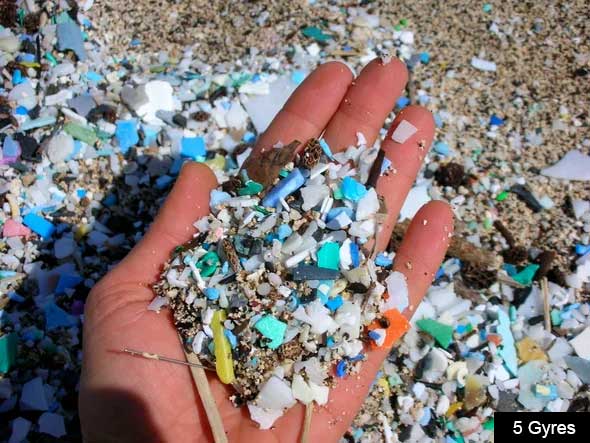Scientists Are Hunting It Down (Scientific American)
Trillions of tiny particles generated by our plastic-reliant society are polluting environments worldwide
During a research cruise to the Sargasso Sea in fall 1971 marine biologist Ed Carpenter first noticed peculiar, white specks floating amidst the mats of brown sargassum seaweed. After some investigating he discovered they were tiny bits of plastic. He was stunned. If thousands of the broken down particles were showing up in in the middle of the Atlantic Ocean, 550 miles from any mainland, he says, “I figured it’s all over the place.”
Carpenter, now at San Francisco State University, published his observations March 17, 1972, in Science. They were the first inkling plastic pollution is not limited to the plastic bags, soft drink bottles and other visible trash strewn along coastlines and gathering in the infamous Great Pacific Garbage Patch, a vortex of currents that concentrates debris in the Pacific Ocean. Weakened by sunlight and pulverized by winds and waves, those plastic products fracture into ever-smaller pieces. Along with the tiny, so-called microfibers shed by synthetic fabrics and the beads put in products like toothpaste, these fragments are called microplastics. With 300 million metric tons of plastic produced each year—about the weight of the entire human population—trillions of degraded plastic bits may be lurking largely unseen in the environment, researchers say.
By Andrea Thompson on August 13, 2018

